With ‘speed = square’ I simply mean that the speed is a vector made up of the square of where you are. The four spaces are:
1) The real line,
2) The complex plane (2D complex numbers),
3) The 3D circular numbers and
4) The 3D complex numbers.
I will write the solutions always as dependend on time, so on the real line a solution is written as x(t), on the complex plane as z(t) and on both 3D number spaces as X(t). And because it looks rather compact I also use the Newtonian dot notation for the derivative with respect to time. It has to be remarked that Newton often used this notation for natural objects with some kind of speed (didn’t he name it flux or so?).
Anyway this post has nothing to do with physics, here we just perform an interesting mathematical ecercise: We look at what happens when points always have a speed that is the square of their position.
On every space I give only one solution, that is a curve with a specific initital value, mostly the first imaginary component on that space. Of course on the real line the initial condition must be a real number because it lacks imaginary stuff.
If you go through the seven pictures of this post, ask in the back of your mind question as why is this all working? Well that is because the time domains we are using are made of real numbers and, that is important, the real line is also a part of the complex and circular number systems.
The other way you can argue that the geometric series stuff we use can also be extended from the real line to the three other spaces. To be precise: we don’t use the geometric series but the fractional function that represents it.
Ok, lets go to the seven pictures:
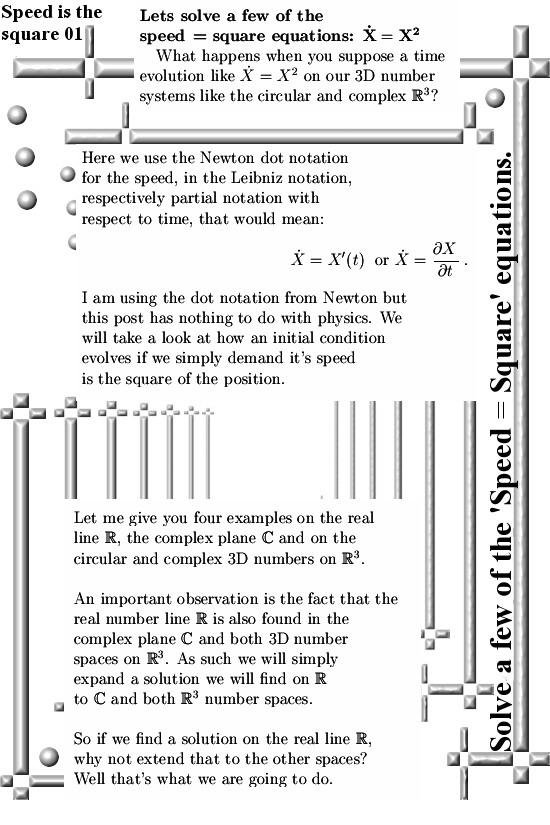
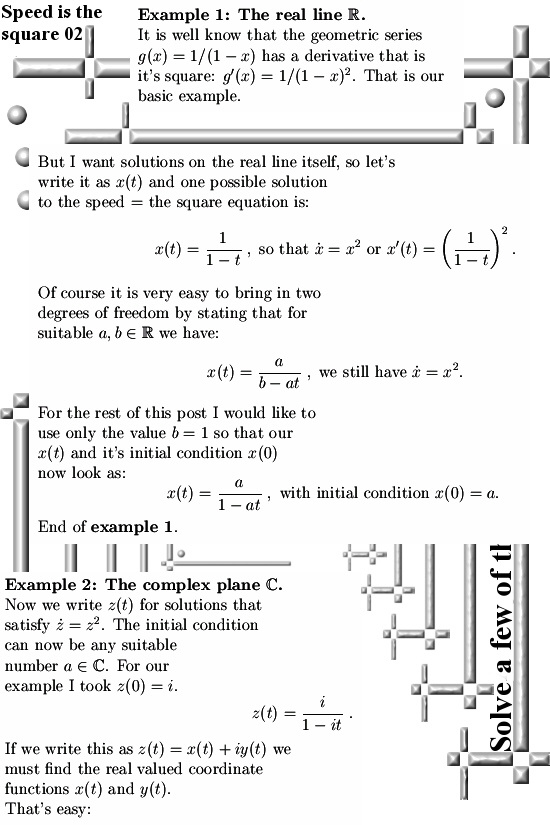
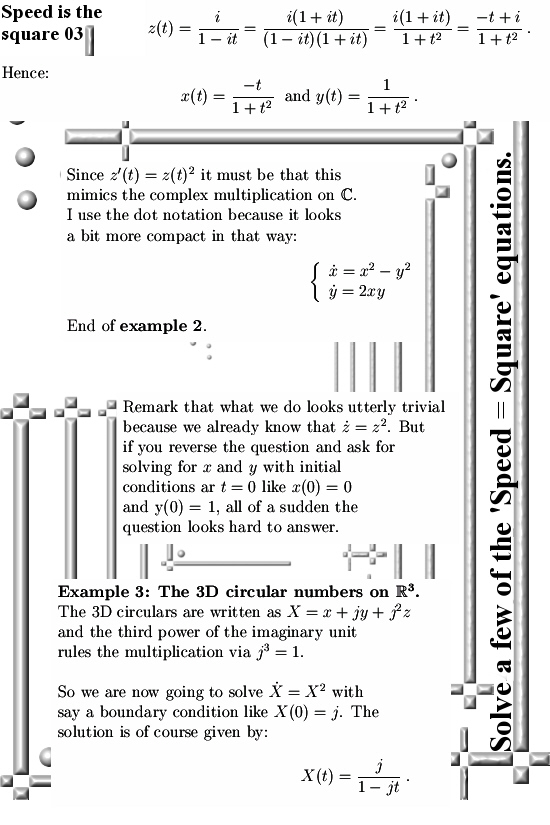
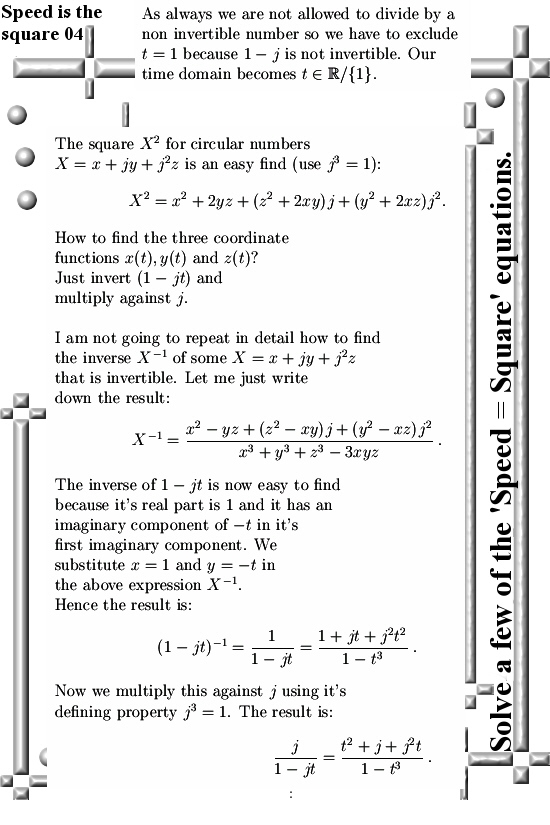
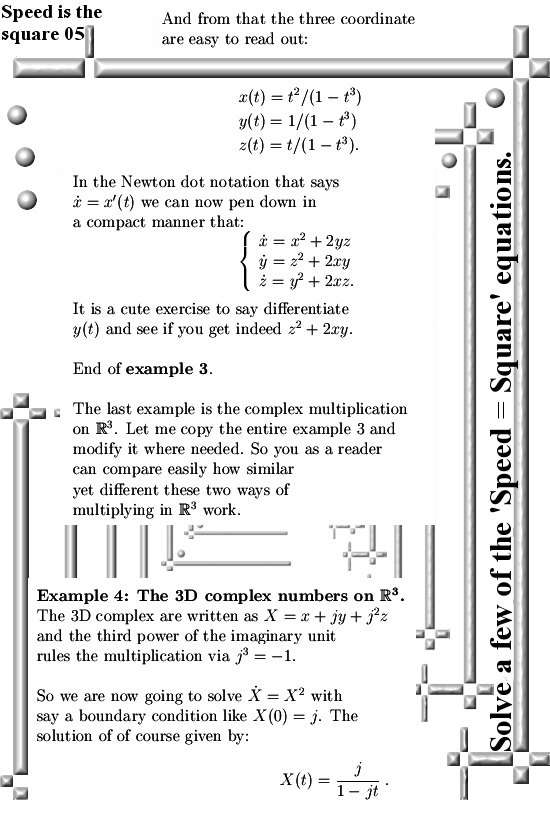
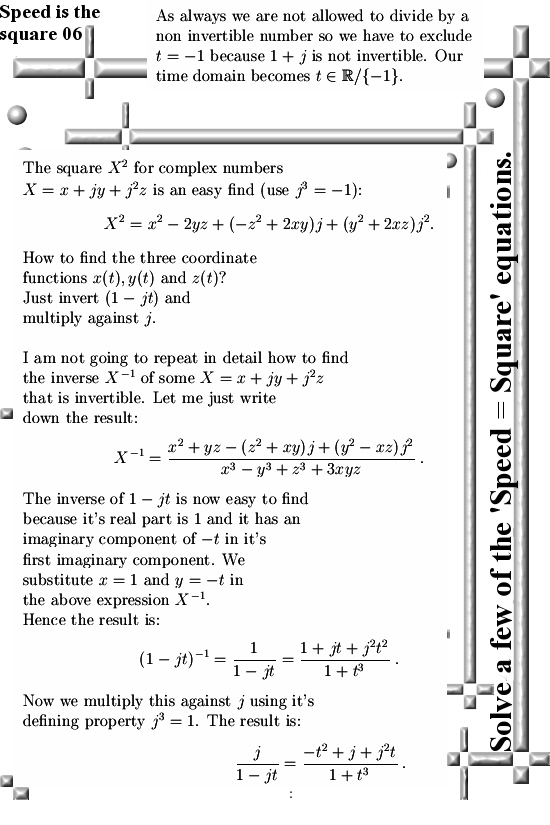
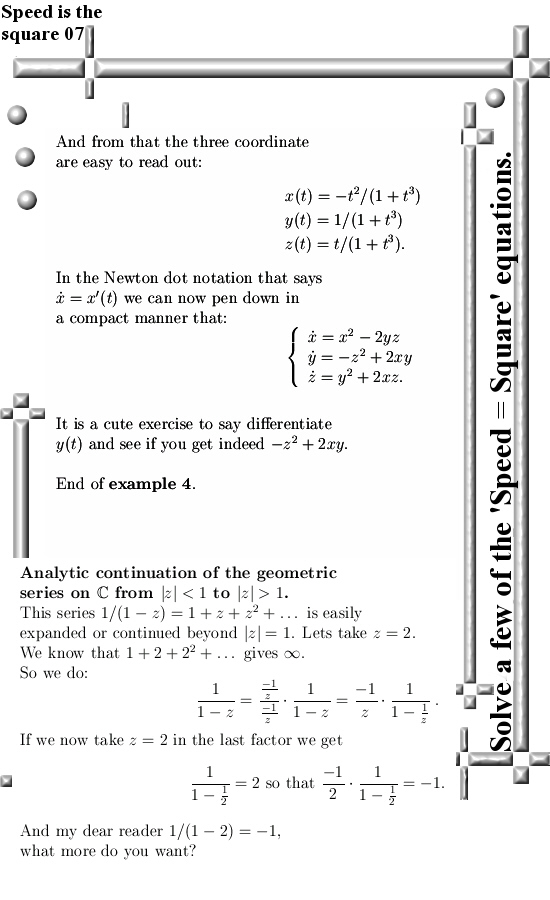
Remark: This post is not deep mathematics or so. We start every time with a function we know that if you differentiate it you will get the square. After that we look at it’s coordinate functions and shout in bewilderment: Wow that gives the square, it is a God given miracle!
No these are not God given miracles but I did an internet search on the next phrase of Latex code: \dot{z} = z^2. To my surprise nothing of interest popped up in the Google search results. So I wonder if this is just one more case of low hanging math fruits that are not plucked by math professors? Who knows?
End of this post, thanks for your attention.